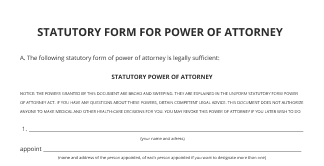Send Consignee Signature with airSlate SignNow
Improve your document workflow with airSlate SignNow
Flexible eSignature workflows
Fast visibility into document status
Easy and fast integration set up
Send consignee signature on any device
Comprehensive Audit Trail
Strict protection requirements
See airSlate SignNow eSignatures in action
airSlate SignNow solutions for better efficiency
Our user reviews speak for themselves






Why choose airSlate SignNow
-
Free 7-day trial. Choose the plan you need and try it risk-free.
-
Honest pricing for full-featured plans. airSlate SignNow offers subscription plans with no overages or hidden fees at renewal.
-
Enterprise-grade security. airSlate SignNow helps you comply with global security standards.

Your step-by-step guide — send consignee signature
Using airSlate SignNow’s eSignature any business can speed up signature workflows and eSign in real-time, delivering a better experience to customers and employees. send consignee signature in a few simple steps. Our mobile-first apps make working on the go possible, even while offline! Sign documents from anywhere in the world and close deals faster.
Follow the step-by-step guide to send consignee signature:
- Log in to your airSlate SignNow account.
- Locate your document in your folders or upload a new one.
- Open the document and make edits using the Tools menu.
- Drag & drop fillable fields, add text and sign it.
- Add multiple signers using their emails and set the signing order.
- Specify which recipients will get an executed copy.
- Use Advanced Options to limit access to the record and set an expiration date.
- Click Save and Close when completed.
In addition, there are more advanced features available to send consignee signature. Add users to your shared workspace, view teams, and track collaboration. Millions of users across the US and Europe agree that a solution that brings everything together in one unified enviroment, is what enterprises need to keep workflows functioning easily. The airSlate SignNow REST API allows you to integrate eSignatures into your app, internet site, CRM or cloud. Check out airSlate SignNow and enjoy quicker, smoother and overall more efficient eSignature workflows!
How it works
airSlate SignNow features that users love
Get legally-binding signatures now!
FAQs
-
Is the consignor the shipper?
A consignor (shipper) is the party that ships the product. They can be a factory, a distribution center, or anyone really that has entered into a contract to ship goods. Typically, the ownership (title) of the goods remains with the consignor until the consignee pays for them in full. -
Is the consignee the ship to address?
We have both a "consignee" and "deliver-to" field on our B/L form. In shipping in the United States, both names and addresses are almost always identical. However when we have an export shipment, the two addresses differ. The consignee designation comes from our customer ship-to address field. -
Is the consignee the customer?
The consignee is the recipient of the goods being shipped. A consignee is a customer or client. The ultimate owner of the product is the consignee, so it is important to keep in mind that shipments destined for a 3rd party logistics company would not list the 3PL as the consignee. -
Can the shipper be the consignee?
The two entities might be two international branches of the same company. Therefore, the shipper and the consignee can be the same. ... The shipper is, in strict terms, the contract party on the bill of lading. The consignee is the recipient of the goods. -
What is the difference between consignee and ship to?
Shipper is a term related to \u201cContract of carriage\u201d but is also closely related to sale contract. So the Shipper bears two hats. He is shipper under \u201ccontract of carriage\u201d but he is buyer (or seller) under sale contract. Consignee: Consignee is the person to whom the carrier (Ship) is supposed to deliver the goods. -
Is the consignee the owner of the goods?
A consignee is only a receiver and not the owner of the goods. The ownership is transferred only when the consignee has paid the consignor, in full, for the goods. In most cases, a consignee is only an agent receiving the goods from the consignor. -
Is consignee and recipient the same?
Generally, but not always, the consignee is the same as the receiver. If a sender dispatches an item to a receiver via a delivery service, the sender is the consignor, the recipient is the consignee, and the deliverer is the carrier. -
Does a bill of lading have to be signed?
A bill of lading is a legally binding document between the shipper of the goods and the carrier detailing the type, quantity, and destination of the goods being carried. ... This document must accompany each freight shipment and must be signed by an authorized representative from the carrier, shipper, and consignee. -
Is the consignee the shipper or receiver?
The difference between a shipper and a consignee is that the consignee is the receiver of the shipment and is usually the owner of the goods. This may be an individual or a company. -
Who is consignee in courier?
In a contract of carriage, the consignee is the entity who is financially responsible (the buyer) for the receipt of a shipment. ... If a sender dispatches an item to a receiver via a delivery service, the sender is the consignor, the recipient is the consignee, and the deliverer is the carrier.






























